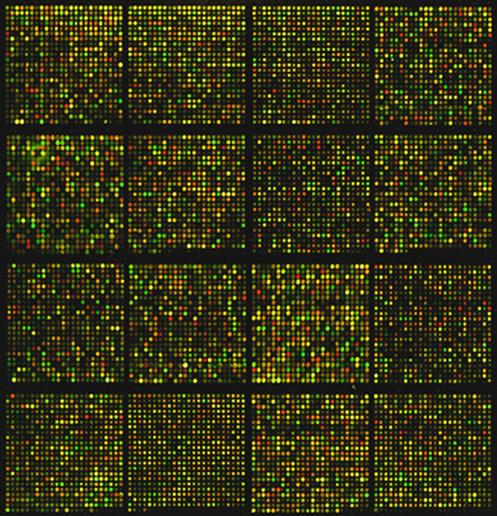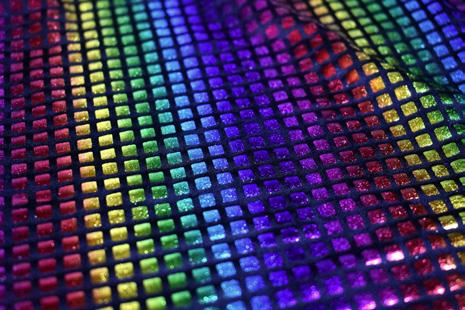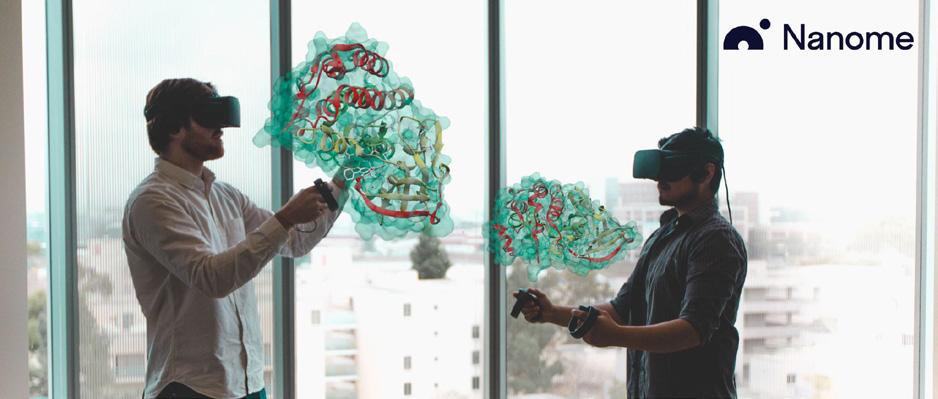
25 minute read
IUPAC Top Ten Emerging Technologies in Chemistry 2022
Discover the innovations that will transform energy, health, and materials science, to tackle the most urgent societal challenges and catalyse sustainable development.
by Fernando Gomollón-Bel
In 2019, IUPAC launched the “Top Ten Emerging Technologies in Chemistry Initiative.” [1] This project, nowadays consolidated and recognised by experts worldwide, highlights the value of chemical sciences in the transition to a green economy and a more sustainable world, in line with the United Nations’ Sustainable Development Goals (SDGs) [2]. Moreover, in 2022 we join the celebration of the International Year of Basic Sciences for Sustainable Development (IYBSSD), a United Nations (UN) resolution to reaffirm and emphasise the importance of basic sciences, chemistry among them, to attain the ambitious SDGs by 2030.
According to the UN, basic sciences will help us attain sustainable development and improve quality of life. In fact, this very UN document stresses the importance of emerging technologies, since they “respond to the needs of humankind […] increasing the health and well-being of individuals, communities and societies” [3]. Last year, the world faced the consequences of the climate crisis in an unprecedented way—deadly heatwaves devastated India and Pakistan in spring, and Europe faced similar challenges during the hottest summer on record. Moreover, we’re still enduring the COVID-19 pandemic and new contagious variants, as well as the consequences of war in Ukraine—among them oil prices skyrocketing. Therefore, this year’s technologies delve into innovative medical solutions and efficient energy sources. The panel of experts convened by IUPAC has examined a pool of recommendations from chemists around the world and selected the most promising proposals. As usual, these emerging technologies hover between experimental endeavours and commercial realities, but all hold great promise to transform our world.
Sodium-ion batteries
An abundant, affordable alternative to lithium
We need better and more affordable batteries. Without inexpensive energy storage, renewable sources of energy, such as solar and wind, will never become mainstream. That’s why, already in previous editions of this selection, IUPAC had identified battery technologies beyond the ubiquitous, Nobel-winning lithium-ion batteries, which, interestingly, were first conceptualised during another oil crisis. This year, IUPAC experts wanted to highlight the potential of another alkaline metal—sodium. It presents several advantages. First, it is a more abundant element, and therefore reduces our reliance on depleted lithium reserves. Additionally, sodium-ion batteries do not rely on cobalt, commonly considered a conflict mineral because of the high-risk mining practices in Congo [4]. Instead, their cathodes contain iron and manganese, both bountiful first-row metals.

Although sodium-ion solutions still suffer when compared to lithium in terms of shelf life and energy density, they offer interesting opportunities in terms of sustainability and circular economy, since their materials and components are easily disassembled, reconditioned, and recycled [5]. Moreover, economic analyses have envisioned the advantages of sodium-batteries, especially in scenarios of scarcity of cobalt and lithium minerals. Most of these arise from adopting aluminium, not sodium itself. Aluminium replaces copper in the anode, offering a cheaper, lighter, and more resistant alternative. Aluminium also avoids the problems derived from excessive discharge, associated with oxidation and eventually thermal runaway and flammability in lithium-ion batteries. Overall, sodium-ion batteries seem safer, thus reducing the costs and dangers of transportation and storage [6]. An interesting approach towards the design of more efficient sodium-ion batteries comes from computational chemistry. The development of cost-effective quantum chemistry models, machine learning, and the surge of supercomputers have pushed materials discovery forward. In the field of batteries, these computational methods have helped design new mixtures for electrodes and electrolytes, as well as contributed to a better understanding of the materials’ behaviour and the prediction of properties. Researchers expect these techniques will accelerate applications [7].
Sodium-ion batteries are already attracting industrial interest. In fact, the world’s biggest manufacturers of lithium-ion batteries, Chinese company CATL, recently unveiled their first-generation commercial battery based on sodium, and aims at hybrid sodium-lithium solutions to revolutionise the electric vehicle sector. Other companies, such as HiNa Battery and Faration, have attracted investments and developed working prototypes and products, while Natron Energy and Altris, based in the US, will launch massive manufacturing plants in 2023. Definitely, sodium-ion is another alternative towards efficient energy storage, another tool in the chemists’ kit to tackle the climate crisis.
Nanozymes
Combining the power of natural and artificial catalysis
Nanotechnology was key to the development of COVID-19 vaccines. The possibilities of the nano-world for healthcare and biomedicine have become evident, and many other technologies have attracted the attention of researchers and our experts at IUPAC. Among them are nanozymes, nanomaterials with the characteristics of natural enzymes, and some supplementary properties. Because nanozymes are human-made and designed in the lab on-demand, they present several advantages in terms of stability, recyclability, and cost. Unlike natural enzymes, which only operate at specific ranges of temperature and pH, nanozymes withstand combative conditions and allow durable, secure, and stable storage.

The field of nanozymes emerged almost twenty years ago. In 2004, Italian researchers functionalised gold nanoparticles to catalyse phosphorylation reactions and, a few years later, Chinese investigators discovered that certain nanoparticles naturally exhibit enzyme-like activity [8]. Both events triggered the exponential growth of a whole new field, which has since achieved very significant progress, including some pioneering commercial ventures in the US, Europe, and Asia. Another advantage of nanozymes comes from the possibilities in customization. Chemists attach all sorts of molecules to modify the properties of nanozymes beyond classic catalysis capabilities. The nano-world offers unique possibilities in terms of surface area, and allows multi-functionalisation—with applications in bioanalysis, diagnostics, therapy, sensing, water treatment, and much more [9]. One of the most attractive approaches in the nanozymes arena is the development of novel point-of-care diagnostics with the potential to fulfil the most critical calls from the World Health Organisation (WHO). For WHO, point-of-care devices should address the ASSURED criteria—Affordable, Sensitive, Specific, User-friendly, Rapid, Equipment- free and Delivered. Nanozymes could provide these properties for many different testing techniques, including electrochemical, fluorescent, colorimetric, and immunological assays. Furthermore, they ensure miniaturisation and long-term stability, both important improvements when compared to current state-of-theart technologies. Moreover, nanozymes have shown good biocompatibility, which ensures safe integration in healthcare applications—including bioimaging and the detection of pathogens [10].
Additionally, nanozymes have found uses in therapeutics, mainly because they catalyse the elimination of reactive oxygen and nitrogen species—linked with aging, inflammation, infertility, neurodegenerative diseases, and cancer. In some preliminary studies, nanozymes have shown protective properties against all these problems, and also have promoted the growth of stem cells, which is useful for tissue engineering and other therapies. Besides biomedicine, nanozymes have materialised as useful solutions for water treatment and pollution removal, in line with the United Nations’ SDGs 6, 14, and 15, all related to cleaner environments. An interesting aspect of this particular application is the recyclability of iron-based nanozymes, derived from their magnetic properties. After decontaminating polluted media, it is easy to extract the nanozymes back from the solution with magnets, for subsequent treatment and reutilisation. Researchers have also designed logic gates based on gold, cerium, platinum, and mercury nanozymes—all of which could catalyse the miniaturisation of computers [11]. By solving some of the issues of both natural and artificial enzymes, and providing some promising new features, nanozymes could soon become an attractive alternative in many different applications.
Aerogels
The lightest materials for thermal insulation
Aerogels are ultralight porous materials. They are derived from gels, but the traditional liquid component—the dispersed phase—has been replaced by gas, nevertheless keeping a stable structure. Although technically the first report of aerogels dates back to 1932, a more thorough work on these materials started in the 1980s, when researchers developed new synthetic methods to accelerate their production. Ever since, the publications on aerogels have grown almost exponentially [12].

Image courtesy of NASA
Aerogels are amongst the lightest solids known, however polymer-based aerogels have great strength and tear resistance. Another key property derives from their low density and porosity—they are very good thermal insulators, therefore have found many interesting applications in aerospace technology. In fact, NASA counts on a dedicated research team investigating this type of materials, and already tested some of them as thermal insulators in their Mars rovers, among other spacecraft [13]. Aerogels provide outstanding thermal insultation with half the thickness of conventional insulating materials.
Perhaps unsurprisingly, such space technologies have led to more down-to-Earth applications of aerogels. And many align with the goals of the IYBSSD and the SDGs—including efficient catalysts, supercapacitors, drug delivery systems, and water purification. The latter—and other applications in environmental remediation—have been extensively explored and have shown great promise. In particular, aerogels successfully remove pollutants, such as volatile organic compounds (VOCs) from the air, as well as toxic substances from water. With different processes, chemists tailor the surface of the aerogels to modify their sorption capabilities, and tune their selectivity. Among the most attractive applications are the removal of heavy metal ions from wastewaters and the effective cleaning and treatment of oil spills. Additionally, some researchers have suggested using the vast surface areas of aerogels to tackle one of the most challenging environmental problems of our generation—the high concentration of atmospheric carbon dioxide. They compete with other porous materials, such as zeolites and metal-organic frameworks (MOFs), in terms of capacity and working temperature, and therefore some adsorbent aerogels have already been commercialised for this purpose [14].
Furthermore, the tuneability of the aerogels’ surface has led to ground-breaking applications in biomedical technologies and sensing. And the combination is even more interesting. For example, aerogels biocompatibility could lead to implantable devices to monitor physiological constants. Biocompatibility and biodegradability have triggered uses in energy generation and storage, providing greener solutions than other available alternatives. Made of glucose, cellulose, graphene, and other environmentally-friendly materials, aerogels have improved the properties of batteries, supercapacitors, and even flexible electronics. But maybe the most interesting application comes, once again, from aerogels’ thermal properties. Different studies have demonstrated how aerogels improve the efficiency of solar thermal plants, ie. energy harvesting platforms that concentrate the sun’s heat to generate steam, move turbines, and generate electricity. Thus, aerogels also provide interesting tools to fight the ongoing energy crisis [15].
Film-based fluorescent sensors
A tuneable, versatile alternative for miniaturised detectors
Fluorescence is a fundamental tool in chemical and biological sensing, mostly due to its sensitivity and selectivity. Because of their tuneability and versatility, film-based fluorescent sensors have become a widespread tool. In these devices, fluorescent molecules are immobilised on suitable surfaces, forming either 2D or 3D films that react upon external stimuli. One advantage is portability; Film-based fluorescent sensors have sizes under one centimetre, which allows the miniaturisation of analytical tools. Film-based fluorescent sensors have interesting properties beyond the small size, such as power efficiency and easy operation. In the past few years, different Film-based fluorescent sensors have been developed to detect diverse species, particularly contaminant gases such as ammonia, NOx and VOCs. Moreover, these films also detect more complex chemicals, including pesticides, nerve agents, and explosives such as trinitrotoluene (TNT) [16].

More recently, researchers designed an film-based fluorescent sensor-based “chemical nose” to detect nicotine with extremely high sensitivity [17]. These results hint at the vast possibilities of Film-based fluorescent sensors in environmental remediation applications, since they could play a key role in the detection, identification, and quantification of different pollutants. More recently, researchers have demonstrated the potential of Film-based fluorescent sensors to detect pathogens, in particular foodborne Listeria monocytogenes, the deadly bacteria behind many food poisoning cases [18]. All this, combined with recent advances in ultraviolet-range laser technologies, could lead to miniaturised pollution detection devices and biomedical devices, with many possibilities in the deployment of interconnected monitoring networks— through the internet-of-things, for example—and applications in the field of wearable electronics and portable sensors [19].
Despite their great promise in the lab, film-based fluorescent devices still await commercialisation; so far only conceptual detectors and prototypes have been reported. The films provide a great platform for sensing, but other developments need to follow to implement them into real-life devices. Maybe modern manufacturing will bridge the gap between academia and industry. Some of these sensors allow roll-to-roll fabrication, which enables the combination of different functionalities in single arrays, as well as high-throughput production. This, combined with sensitivity, selectivity, miniaturisation, and reusability, could provide the right push to this emerging technology [20].
Nanoparticle megalibraries
High-throughput synthesis and screening arrive to the nano-world
Big-data and high-throughput screening have driven the discovery of new chemicals for years. Nanoparticle megalibraries somehow translate these techniques into the materials’ world. By creating arrays with millions of nanoparticles, which vary in composition and structure, scientists have devised a powerful tool to personalise properties and applications.

Researchers build these megalibraries using a nanoparticle deposition technique known as polymer pen lithography. Different metal salts are dissolved into polymeric inks, which are carefully deposited onto a surface using thousands of microscopic soft tips—the force and pressure determine the size of the droplet, thus the scale of the particles. Afterwards, applying heat eliminates the polymers and reduces the salts, leaving the metal nanoparticles ready to catalyse chemical reactions [21]. It is equivalent to manufacturing millions of tiny reactors, condensed onto a simple microscope slide [22].
Although very new, this technology has already led to interesting discoveries. For example, in 2018, nanoparticle megalibraries were used to identify potential catalysts for the formation of single-walled carbon nanotubes (SWNTs). From hundreds of thousands of different nanoparticles, with varying proportions of gold and copper, Raman spectroscopy studies determined the ideal recipe to manufacture SWNTs – Au3Cu, an alloy that hadn’t been previously identified as an active catalyst for this reaction. In a single experiment, they produced more inorganic nanoparticles than had ever been made before, researchers explained [23]. Further studies have explored the potential of different metal combinations as heterogeneous catalysts for industrially-relevant reactions, such as the reduction of carbon dioxide and water splitting—closely related to SDGs 7, 12, and 13, and important tools to tackle the climate crisis.
Such a deep understanding of metal nanoparticles and their properties could lead to the discovery of the so-called “materials genome.” This map could help chemists and materials scientists better understand how unique atomic compositions affect the properties of matter at the nanoscale, and potentially envision new applications in many different fields. Because of the vast amounts of data generated with nanoparticle megalibraries, researchers have started using Machine Learning algorithms to accelerate the analysis, even help identify new catalytic combinations beyond the experimental enclave [24]. Computational chemistry also helps expand the possibilities of synthesis, and the study of more complex combinations. Nowadays, companies such as TERA-print and Stoicheia in the US, look into commercialisation opportunities for both the synthesis of nanoparticles megalibraries, and their analysis using Artificial Intelligence. They share an ambitious goal: finding new materials faster than anybody else.
Fibre batteries
A new form of energy storage, ready for wearables
As mentioned before, the world needs better batteries to tackle the energy crisis. And it is surprisingly hard to store energy efficiently with current technologies. Indeed, running your household electrics on battery power would triple your energy bill and take up tremendous amounts of space, according to estimations from the US Energy Information Administration [25]. Fibre batteries provide yet another interesting solution, and at the same time open up possibilities in the world of wearable electronics.

The configuration of fibre batteries is totally different from traditional alternatives, usually based on stacked electrodes and components—much like the original design by Italian chemist Alessandro Volta. Instead, fibre batteries exhibit an almost one-dimensional design, with intertwined wires as electrodes. The structure is protected with a polymeric coating, which also seals the electrolyte within the battery. Similarly, a modified version of this design yields supercapacitors—energy storage solutions that deliver their charge quickly, for example in photographic flashes [26]. Overall, fibre batteries present a series of advantages over other solutions; they are flexible, robust, and safe. Moreover, woven fibres lead to battery “fabrics,” adaptable to many different shapes and applications. Some studies suggest that battery fabrics are soft and breathable, thus ideal for applications in wearable electronics. They also appear to withstand washing without any loss in energy density [27]. Other methods, such as thermal drawing, allow the fabrication of fibre batteries from electroactive gels, while simultaneously the electrodes get protected with flexible, waterproof cladding. This strategy has achieved the continuous production of fibres up to one hundred forty metres long and showcase similar discharge capacities [28].
More recently, researchers developed new methods to produce high-performance woven fibre batteries, based on lithium-ion technology. The energy density of these devices is eighty times better than the first fibre battery prototypes; furthermore, they retain 90% of their capacity after five hundred recharge cycles, which is comparable to most commercial cells. Among the proof-of-concept applications, scientists studied the possibilities to charge smartphones wirelessly, as well as the integration of the woven battery with a textile display and an interactive jacket, used to monitor different bodily constants. The process is also scalable, as it is optimised to work with standard industrial equipment, including widespread machinery in the textile industry such as rapier looms. In ideal settings, the batteries could cost less than 0.05 US dollars per metre [29]. Companies such as Samsung and Huawei are investigating the potential of fibre batteries, a market that’s expected to grow alongside products like wearable devices and printed electronics.
Liquid solar fuels
A strategy to “bottle renewables” and make greener chemicals
Plants use photosynthesis to convert carbon dioxide and sunlight into glucose. Similarly, chemists created “artificial photosynthesis” to mimic this process, and produce energy-rich substances, with applications as fuels. Normally, researchers seek carbon-based molecules, such as alcohols and low-molecular weight hydrocarbons, to replace the ubiquitous oil-derived fuels with a less pollutant alternative. However, some classifications also include fuels such as hydrogen, ammonia and hydrazine, as long as the main source of energy used in their fabrication is fully-renewable— mostly solar and wind [30]. Like batteries, solar fuels provide new opportunities to store intermittent energy. That is why some experts call this strategy “bottling renewables” [31].
Nowadays, pilot solar fuel factories have started emerging around the world, and funding bodies in the US, Europe and Asia push strongly towards the establishment of consortia and collaborations in this field. In the meantime, researchers focus on solving some of the hurdles ahead. For example, although copper catalysts catalyse the formation of small hydrocarbons, it is still challenging to synthesise longer chains. Now, nickel electrocatalysts seems to offer an interesting alternative. Although the proportion of long-chain hydrocarbons is limited, initial results suggest further modifications could extend the synthetic scope of sustainable fuels [32].

Photocatalysis also offers great opportunities. By directly using sunlight to activate and accelerate reactions, chemists save steps and simplify the overall process. Many consider photocatalysis the ideal method to convert solar energy into energy-rich products, such as fuels. Currently, many groups worldwide are working towards solving the problems of this process. Even plants, after billions of years of evolution, only manage maximums of 4% efficiency in energy conversion. Some of these solutions come from pairing human-made catalysts with natural structures, such as enzymes or even bacteria. Among other advantages, these coupled systems provide access to interesting commodity chemicals, such as acetic acid [33]. Other groups dream about photocatalytic processes that work at night, and have connected catalysts to capacitors and batteries, which store energy during illumination and start releasing it in the evening. The concept of “persistent photocatalysis” could curtail intermittence, improving the process’ performance [34].
Moreover, many efforts focus on the design of devices for industrial implementation. Among them, some tackle an all-in-one approach, directly combining the light-harvesting technologies with electrolysers to minimise losses. Now, further investments should stimulate the scalability of solar fuel synthesis [35]. It is the first step towards the decarbonisation of our economy and, in the future, it could provide access to commodity chemicals without the need for oil and gas.
Textile displays
Fibre-based light-emitting diodes for flexible screens
Screens have become omnipresent in our lives. Moreover, it’s estimated that 80% of our external environmental perception comes directly through our eyes, making vision the most crucial and complex sense of all. Now, with the emergence of high-speed communications and connected devices, namely the internet-of-things, researchers are starting to explore the field of textile displays. Such devices will transform our daily electronics, as well as how we interact with them, and catalyse the commercialisation of new wearable devices and smart fabrics.

Traditionally, wearables have relied on thin-film displays, stuck onto the surface of fabrics and textiles. The approach of textile displays is utterly different, in fact, it is quite similar to the abovementioned fibre batteries. Researchers directly develop fibres capable of emitting light, and then intertwine them to form flexible fabrics as displays. This strategy solves many problems: first, it increases the breathability, which traditional screens would hinder; second, it makes wearables softer, more similar to actual clothes; and third, fibres flex freely; deformations don’t affect emission as much as in thin-film screens [36].
Researchers have investigated many different materials to manufacture textile displays. For example, organic light-emitting diodes (OLEDs)—usually planar, sandwiched structures—have been reshaped into coaxial fibres. Alternatively, polymer light-emitting diodes (PLEDs) increase flexibility. The polymers used have electroluminescent properties, and support popular production processes. Because some combine little bits of OLEDs with PLEDs, a new nomenclature has emerged to define these light-emitting devices: fibre LEDs (FLEDs). Other approaches use light-emitting electrochemical cells, which combine cathode and anode materials with electrolytes, or dispersions of powdered luminescent materials (usually sulfide salts) into fibres. The former has enabled novelties such as colour tuneability, while the latter, despite its lower brightness, shows advantages from the production point-of-view, because fabrication allows traditional weaving processes, thus enabling metre-long fibres and high-surface displays [37].
In this sense, researchers now explore the possibilities of large-scale textile displays. While normally applications focus on wearable devices, big screens could find spaces in the homes of the future, as well as uses in advertising and promotion. Recently, engineers demonstrated the fabrication of a forty-six inch (117cm) smart textile display with many possibilities beyond its size. For example, it’s easily coupled with touch sensors and wireless power transmitters, which provides new ideas for interaction and, potentially, powerful possibilities within the interconnected world of the internet-of-things. This brings the applications of this emerging technology even closer and we could enjoy textile displays sooner than originally expected [38].
Rational vaccines with SNA
Spherical nucleic acids to reshape and restructure vaccine technology
The COVID-19 pandemic has emphasised the importance of vaccines. In fact, the IUPAC “Top Ten” initiative has also repeteadly recognised the value of emerging and established technologies in this field, such as mRNA vaccines and the scalable synthesis of nucleic acids [39]. Now, in this edition, our experts elected yet another interesting innovation in vaccinology: spherical nucleic acids, usually abbreviated simply as SNAs. Originally developed in 1996, these structures star strands of nucleic acids attached to different kind of nanostructures. First came gold nanoparticles, but other materials—silica, polymers, proteins, micelles, MOFs— soon followed, providing a powerful versatility [40].

The chemical and biological properties of SNAs differ from linear nucleic acids, even when they share the same sequence of nucleotides. The three-dimensional arrangement promotes passage into the cells, which happens more rapidly and in higher quantities. Additionally, such an organisation yields properties that the individual components lack separately. Indeed, initial studies suggest therapeutic antigens and adjuvants that previously failed in clinical trials could showcase an increased activity when incorporated into nano-engineered SNA treatments [41].
SNA vaccines have proven useful protecting against infectious pathogens such as SARS-CoV-2, the coronavirus that causes COVID-19. When challenged with a lethal dose of the virus, mice that had previously received the vaccine survived, which demonstrates the protective potential of SNA generating good immune responses. It is remarkable how this particular design did not need the whole structure of the spike protein to work. The DNA-covered liposomes enclosed smaller antigens of the receptor binding domain, simplifying both the synthesis and adaptability of this type of vaccine. Moreover, SNA formulations remain stable at room temperature, which could facilitate access to vaccines in remote locations, in line with SDGs 1, 3, and 10 [42].
Spherical nucleic acids have also shown promise in cancer immunotherapy, in particular against melanoma, ovarian and prostate cancers. In one study, the treatment with SNA vaccines successfully eliminated tumours from 30% of the mice, which motivated transition to human clinical trials [43]. In fact, currently six human clinical trials test SNA-related products for immunotherapy and gene regulation. Biotechnology company Exicure seeks approval and commercialisation of SNA-therapies, and has already started collaborations with Allergan, Dermelix and Ipsen to develop different drugs. Definitely an emerging technology, SNA will likely change how we tackle diseases in the future [44].
VR-enabled interactive modelling
Computational chemistry connects in the metaverse
In the year of the metaverse, IUPAC “Top Ten” ventures into virtual reality (VR). Through virtual spaces, researchers explore interactive collaborations that enhance the possibilities of computational chemistry and molecular dynamics. Thanks to these innovative interactions with molecules, researchers reinforce their special reasoning, as well as improve their understanding of quantum chemistry.

Instead of interacting with computers through keyboards and mice, VR-enabled platforms allow researchers to enter an imaginary room populated with giant molecules, and “touch” them thanks to synchronised wireless controllers in their hands. Once in there, they poke atoms, move them, introduce modifications and functional groups—all while the virtual molecule is simulated and rendered in real time by external computers. Since intermolecular interactions are intrinsically three-dimensional, working in these virtual spaces improves our understanding of chemical reactions. The immersive experience, vastly used in other settings such as surgery rooms and animation studios, accelerates results and reduces errors. When working with VR, chemists complete molecular modelling tasks up to ten times quicker than using traditional interfaces [45].
Far from fantasy, this strategy has already offered real-life results. For example, VR-settings helped researchers generate protein-ligand docking poses efficiently, using both experts and non-experts to explore diverse positional possibilities. This model worked to design different antiviral drugs, which included modifications implemented by users “on-the-fly,” as they identified atoms and functional groups that could better bind the proteins’ active sites [46]. Furthermore, researchers used a similar strategy to design inhibitors for one of the main targets of SARS-CoV-2, a protease called Mpro. All of these studies were run under an open-source framework, Narupa, which runs with most commodity VR sets in the market [47]. Another perk of these studies comes from the comprehensive collection of data during the demonstrations. After proper processing, this information instructs Machine Learning algorithms and neural networks, which predict the properties of molecules more accurately than alternative approaches.
VR-modelling also creates new possibilities in chemical education, in line with SDG 4 and the core values of IUPAC. The students’ feedback when using these VR-enhanced tools, in particular a programme dubbed Manta, is much more positive than traditional techniques. The students’ understanding of macroscopic and microscophic phenomena seems to be as well, thanks to direct observation of atoms and molecules. Moreover, digital tools open possibilities for remote education, thus enabling teachers to share their lessons with virtually anybody, anywhere, provided they have an internet connection and access to VR-sets [49].
Some VR-based chemistry platforms have already reached the market: Nanome is a US company that commercialises this technology [50]. Among other selling points, they highlight the huge opportunities of VR for remote and cross-country collaboration. Nanome has also explored the educational potential of their platform in education, both in undergraduate classrooms and commercial company settings. The latter, a partnership with Novartis, demonstrated immersive environments helped researchers better understand the structural features and chemical properties of drugs and targets [51]. Often overlooked, VR brings some advantages to the chemical sciences, and could become a basic tool in all laboratories.
An established initiative
Present and future of the IUPAC “Top Ten Emerging Technologies in Chemistry”
This year marks the fourth edition of the IUPAC “Top Ten” initiative, now recognised within the chemistry community as a catalyst for a better world [52]. The technologies above reshape full fields, from energy storage and materials science to drug discovery and education—once again showcasing the considerable capability of chemistry to interconnect the sciences, as well as fundamental aspects of our everyday lives. Furthermore, as this project grows, so does its close connection with sustainability and societal challenges. In particular, while we celebrated IYBSSD 2022, IUPAC wanted to highlight advances with a true potential to provide solutions to real-world problems, such as the scarcity of materials, the energy crisis, the increased risk of new diseases, and of course climate change.
Acknowledgements
Michael Dröscher (Chair), Jorge Alegre Cebollada, Javier García Martínez, Ehud Keinan, Rai Kookana, Christine Luscombe, Zhigang Shuai, Natalia P. Tarasova, and Bernard West. Many thanks to Bonnie Lawlor, for her detailed proof reading of this manuscript.
References - See online for full list
CITE: Chemistry International October-December 2022, pp. 4-13








